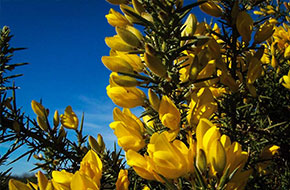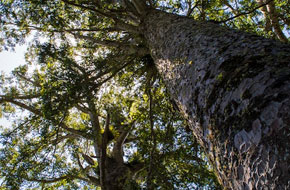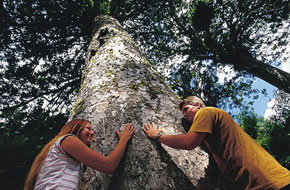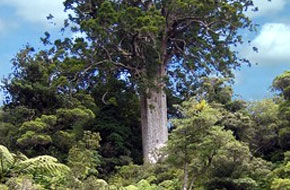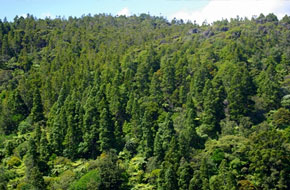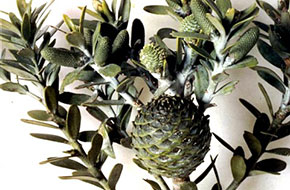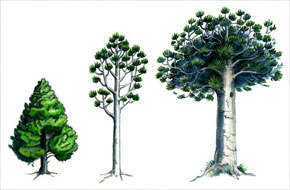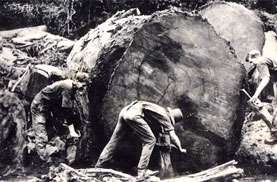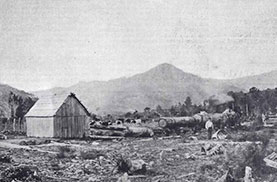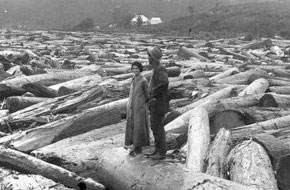Threats To Survival
The biggest threat to the survival of young kauri is invasive weeds - exotic invaders such as pampas grass, gorse, blackberry & kikuyu, which is why we place so much importance on releasing our trees until they are tall enough to survive on their own. Gorse forms...
First Steps Into The Future
Against this background it seemed rather fitting that we should mark the start of the new millennium by taking the first steps towards a future when groves of these beautiful trees will once again dominate the forest canopy, with the potential to endure into the...
Remaining Stands
Kauri Tree 309 Road - Coromandel Peninsula (Photo: Tourism Coromandel) With all this destruction, what is left of the original forests today? Max Johnston of Peninsula Environmental Practice has had extensive experience with kauri in the NZ Forest Service, and is the...
Coromandel Giants
While most New Zealanders are familiar with the giant kauri of the Waipoua Forest, not so many know about the remaining giants of the Coromandel. In fact, of the great trees listed in The World of the Kauri (Halkett, J. & Sale, EV, Reed Methuen,1986), Coromandel...
Kauri Distribution
The kauri grows in the subtropical northern part of the North Island, with a natural range as far as latitude 38 degrees south, roughly on a line joining Tauranga and Kawhia. However kauri are quite hardy and will grow as far south as Stewart Island (47 degrees...
Foliage
Kauri male and female cones Kauri leaves have no petioles and are arranged alternately. They are thick and leathery with parallel veins and are dull olive-green colour. Juvenile leaves are 5-10 x 0.5-1.2cm; Adult leaves are 2.0-3.5 cm long. Most leaves remain on the...
Kauri Growth
Trees normally reach a height of 30m -- occasionally 60m -- with a normal trunk diameter of three metres, sometimes reaching seven metres. As a young tree (known as a ricker) the kauri has a narrow, conical shape with branches up the length of the trunk. As the tree...
Botanical Details
The Kauri, Agathis australis, is New Zealand's largest and most famous native tree, on account of its size and age. It is regarded worldwide as a truly noble tree. Ancestors of the kauri first appeared in the Jurassic Period 190-135 million years ago. Kauri - podocarp...
An end to logging
It's easy to forget that logging of kauri forests continued until comparatively recently. Government policy changed over the years, not only because of the dwindling resource but also in the face of mounting public pressure to save the remaining forests. The New Kauri...
The Coromandel Story
A lasting reminder of the once thriving kauri industry on the Peninsula are the kauri dams of the Coromandel. Estimates of the number of dams constructed in the Kaueranga Valley near Thames alone range from around 60 to over 100, built across most streams in the...
Maori and the Kauri
Professor John Salmon says that to the ancient Maori, kauri ranked second only to the totara in importance. Some of the greatest northern war canoes were constructed out of single massive kauri trunks, felled in the forest after elaborate tapu-lifting ceremonies, then...
Mass Felling
Logs near Coroglen Kauri logs piled up near Coroglen after a log drive down the Waiwawa River. Ref. No. 1/2-022204; G Permission of the Alexander Turnbull Library, National Library of New Zealand Te Puna Matauranga o Aotearoa, must be obtained before any re-use of...

